Curd and Yogurt
1 . The history of yogurt is fascinating and spans thousands of years. Let’s delve into its origins and how it became a beloved food worldwide
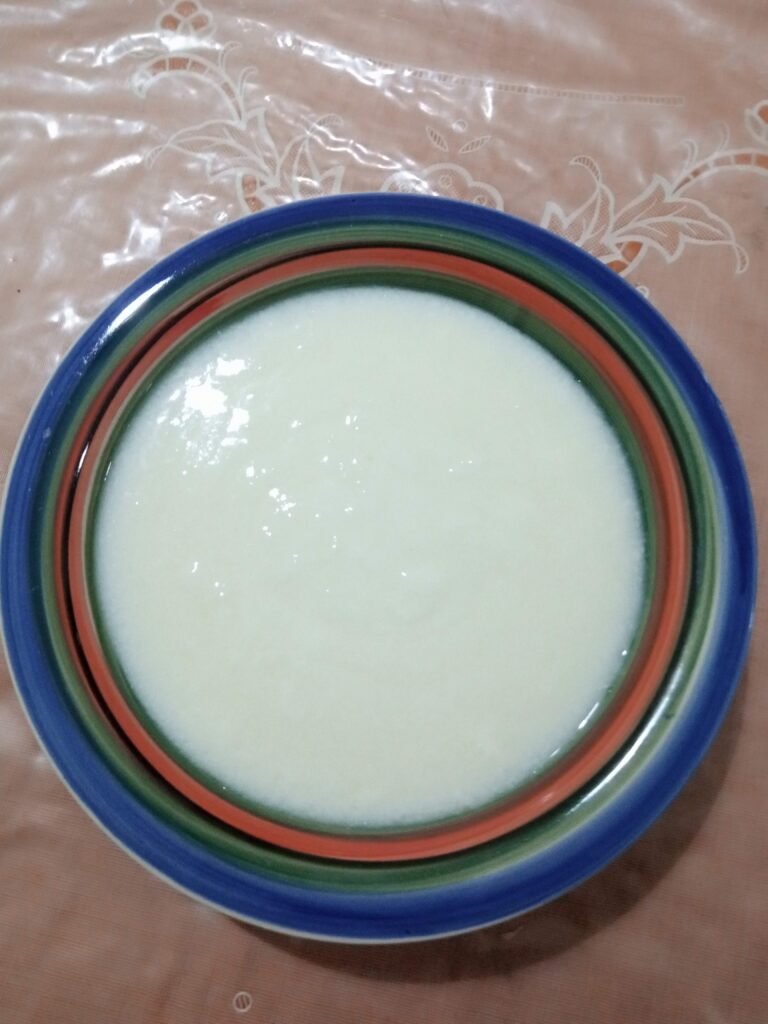
2 . Ancient Beginnings:
-
- Mesopotamia: Yogurt likely originated in Mesopotamia (modern-day Iraq) around 5,000 BC.
- Accidental Discovery: It is believed that yogurt was accidentally discovered when milk was exposed to naturally occurring bacteria. These bacteria fermented the milk, resulting in the first yogurt-like product.
- Plant Exposure: The bacteria may have come from contact with plants or transferred from the udder of domestic milk-producing animals.
- Spread Across Cultures:
- Central Asia: Yogurt-making techniques spread to Central Asia, where it became an integral part of the diet.
- India: Ancient Indian texts mention yogurt as a nutritious food.
- Middle East: The Middle Eastern region embraced yogurt, incorporating it into various dishes.
- Cultural Significance:
- Ayurveda: In India, yogurt is revered for its cooling properties. Ayurveda recommends consuming it during the daytime.
- Religious Practices: Yogurt is used in various religious rituals and ceremonies.
- Health Benefits Discovered:
- Probiotics: People noticed that yogurt improved digestion and overall health.
- Lactic Acid: Fermentation of sugars in milk by bacteria produces lactic acid, giving yogurt its characteristic tart flavor.
- Modern Trends:
- Global Popularity: Yogurt is now a staple food worldwide.
- Variations: Different cultures have their own variations (Greek yogurt, labneh, kefir, etc.).
In summary, yogurt’s accidental discovery led to its widespread adoption across cultures. Its health benefits and versatility continue to make it a beloved food today!123
3 . Curd and Yogurt
Curd and yogurt are both dairy products, but they differ in how they are made. Let’s explore the key differences between the two:
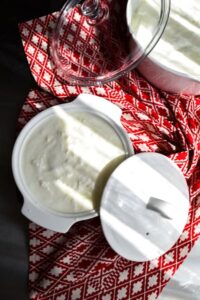
Curd (Dahi):
- Fermentation Process: Curd is made through spontaneous fermentation using existing curd or curd culture. When we make curd at home, we add a small amount of existing curd (starter) to a bowl of milk and let it sit overnight, covered in cloth. This process is referred to as coagulation of milk or curdling.
- Texture: Curd has a lighter texture and may not always have a smooth, uniform consistency.
- Bacterial Strains: The bacterial strains in curd can vary based on the environment and the specific starter used.
Yogurt:
- Industrial Production: Unlike curd, yogurt is an industrial product. The yogurt we buy from the market falls into this category.
- Specific Starter Cultures: Yoghurt is also a fermented milk product, but it involves the use of specific starter cultures (usually standardized strains of Lactobacillus bulgaricus and Streptococcus thermophilus). These bacteria give yogurt its unique texture, taste, and consistency.
- Longer Shelf Life: The use of standardized bacteria in yogurt makes it last longer than homemade curd.
- Variety of Flavors: Commercial yogurts come in a variety of flavors, some of which may have added sugar or fruit.
In summary, while both curd and yogurt are fermented dairy products, their preparation methods, bacterial strains, and textures differ. So, even though we often use the terms interchangeably, they are indeed distinct from each other! 12
Making yogurt at home is easy and requires just a few simple ingredients. Here’s a step-by-step guide:
4 . Homemade Yogurt Recipe
Ingredients:
- 1 quart (946 mL) milk (any kind, but avoid ultra-high pasteurized milk)
- 1/4 to 1/2 cup non-fat dry milk (optional, for thicker yogurt)
- 1 tablespoon white sugar (to feed the bacteria)
- A pinch of salt (optional)
- 2 tablespoons existing yogurt with live cultures (or freeze-dried bacteria)
Instructions:
- Heat the Milk:
- Pour the milk into a pot and heat it to 185°F (85°C). Use a double boiler or stir constantly to prevent burning.
- If you don’t have a thermometer, heat the milk until it starts to froth.
- You can use any type of milk (whole milk, 2%, 1%, nonfat, etc.), but avoid ultra-high pasteurized milk (UHP) as it may not yield good results.
- Cool the Milk:
- Let the milk cool down to 110°F (43°C). Use a cold water bath or stir frequently if cooling at room temperature.
- Don’t let it go below 90°F (32°C) or above 120°F (49°C).
- Warm the Starter:
- While the milk is cooling, let the existing yogurt (starter) sit at room temperature.
- The starter contains live cultures necessary for yogurt fermentation.
- Mix the Starter and Milk:
- Add 1-2 tablespoons of the existing yogurt to the cooled milk.
- Stir well to evenly distribute the starter.
- Ferment the Yogurt:
- Cover the bowl with a cloth or lid.
- Place it in a warm corner of your kitchen for 6-8 hours (or overnight) to allow fermentation.
- The longer it ferments, the tangier the yogurt will be.
- Refrigerate:
- Once the yogurt is set, refrigerate it for at least 4-6 hours to thicken.
- Enjoy your homemade yogurt plain or with your favorite toppings!
Remember, homemade yogurt is not only delicious but also packed with probiotics and gut-healthy benefits. 123
Both yogurt and curd can be made at home, and they are delicious, nutritious, and easy to prepare. Let me guide you through the process of making each of them:
How to Make Curd :
Curd, also known as dahi, is a traditional fermented dairy product. It’s made by adding a small amount of existing curd (starter) to a bowl of milk and allowing it to ferment. Here’s how you can make curd at home:
- Heat the Milk:
- Pour the milk into a pot and heat it to 185°F (85°C). You can use any type of milk (whole milk, 2%, 1%, nonfat, etc.).
- If you don’t have a thermometer, heat the milk until it starts to froth.
- Stir occasionally to prevent burning.
- Cool the Milk:
- Let the milk cool down to 110°F (43°C). You can use a cold water bath to speed up the cooling process.
- Don’t let it go below 90°F (32°C) or above 120°F (49°C).
- Warm the Starter:
- While the milk is cooling, let the existing yogurt (starter) sit at room temperature.
- The starter contains live cultures necessary for yogurt fermentation.
- Mix the Starter and Milk:
- Add 1-2 tablespoons of the existing yogurt to the cooled milk.
- Stir well to evenly distribute the starter.
- Ferment the Curd:
- Cover the bowl with a cloth or lid.
- Place it in a warm corner of your kitchen for 6-8 hours (or overnight) to allow fermentation.
- The longer it ferments, the tangier the curd will be.
- Refrigerate:
- Once the curd is set, refrigerate it for at least 4-6 hours to thicken.
- Enjoy your homemade curd!
Fermented dairy products similar to curd and yogurt are enjoyed worldwide. Let’s explore some global variations:
Kefir (Middle East, Caucasus, and Central Asia):
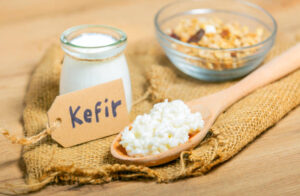
-
- Kefir is a fermented milk drink made by adding kefir grains (a combination of bacteria and yeast) to milk.
- It has a tangy flavor and a thinner consistency than yogurt.
- Kefir is rich in probiotics, vitamins, and minerals.
Skyr (Iceland):
-
- Skyr is an Icelandic dairy product similar to yogurt.
- It is strained to remove excess whey, resulting in a thick, creamy texture.
- Skyr is high in protein and low in fat.
Labneh (Middle East and Mediterranean):
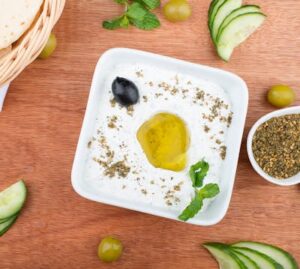
-
-
- Labneh is a strained yogurt or curd cheese.
- It is made by draining yogurt to remove the whey, leaving behind a thick, creamy consistency.
- Labneh is often seasoned with herbs and olive oil.
-
Ayran (Turkey and Middle East):

-
-
-
- Ayran is a refreshing yogurt-based drink.
- It is made by diluting yogurt with water and adding a pinch of salt.
- Ayran is commonly served chilled and pairs well with spicy foods.
-
-
Filmjölk (Sweden):
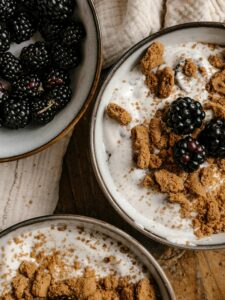
-
- Filmjölk is a traditional Swedish fermented milk product.
- It has a mild flavor and a thinner consistency than yogurt.
- Filmjölk is often enjoyed with muesli or berries.
Amasi (Southern Africa):
-
-
- Amasi is a fermented milk product popular in Southern Africa.
- It is made by allowing milk to ferment naturally.
- Amasi has a thick consistency and a tangy taste.
-
Remember that each of these variations has its unique taste, texture, and cultural significance. Exploring these global fermented dairy products can be a delightful culinary adventure! 1234

Curd and yogurt alongside lassi are not only delicious but also offer numerous health benefits, especially during summer. Let’s explore these dairy-based delights and how they can help you beat the heat:
Curd (Yogurt):
-
- Probiotic Powerhouse: Curd is a rich source of probiotics—beneficial live bacteria that support gut health. These probiotics aid digestion, improve nutrient absorption, and maintain a healthy balance of gut flora.
- Cooling Effect: Curd has a cooling effect on the body. It soothes the digestive system and helps regulate body temperature during hot weather.
- Hydration: Curd contains water, which contributes to hydration. It’s an excellent way to replenish lost fluids due to sweating.
- Calcium and Protein: Curd is packed with calcium and protein. Calcium supports bone health, while protein helps repair tissues and build muscle mass.
- Vitamins and Minerals: Curd provides essential vitamins (like B12 and riboflavin) and minerals (such as phosphorus and potassium).
- Weight Management: The protein in curd promotes satiety, making you feel full and aiding in weight management.
- Yogurt:
- Similar to Curd: Yogurt is essentially the same as curd but often undergoes specific bacterial fermentation processes.
- Protein and Probiotics: Like curd, yogurt is rich in protein and probiotics. It supports gut health, aids digestion, and boosts immunity.
- Vitamin B Complex: Yogurt contains B vitamins (B12, riboflavin, and niacin), which play a crucial role in energy production and overall well-being.
- Creamy and Versatile: Yogurt’s creamy texture makes it a versatile ingredient. Use it in smoothies, parfaits, or as a base for savory dips.
Curd (also known as yogurt) is a versatile ingredient that can be incorporated into various recipes to maximize its health benefits. Let’s explore different ways to enjoy curd while reaping its nutritional advantages:
- Basic Homemade Curd (Dahi):
- Probiotic Powerhouse: Curd is a lactic fermentation of milk, rich in beneficial bacteria known as probiotics. These friendly bacteria support gut health, aid digestion, and boost immunity.
- Cooling Effect: Curd has a cooling effect on the body, making it ideal for hot weather.
- Calcium and Protein: It provides essential nutrients like calcium (for bone health) and protein (for tissue repair and muscle building).
- Immunity Booster: Long-term consumption of yogurt is associated with increased production of gamma interferon, which plays a role in immune responses.
- Weight Management: The protein content in curd promotes satiety, helping with weight management.
- Digestive Aid: Curd’s probiotics improve gut function and alleviate symptoms of digestive disorders.
- Recipe: Try making Homemade Curd by fermenting cow’s milk. It’s simple and nutritious1.
Flax Seed Raita:
-
- Omega-3 Fatty Acids and Calcium: Combine curd with ground flax seeds to create a refreshing raita. Flax seeds provide omega-3 fatty acids and calcium.
- Recipe: Mix flaxseed powder, curd, salt, and chopped mint leaves. Serve chilled1.
- Lemon Curd (Sugar-Free, Low Carb):
- Healthy Vegan Option: Make a sugar-free, low-carb lemon curd using coconut milk, lemon juice, and zest. It’s tangy, creamy, and perfect for desserts or as a spread.
- Recipe: Whisk coconut milk, lemon juice, zest, erythritol, cornstarch, and turmeric. Heat until smooth and thickened2.
- Smoothies with Yogurt:
- Protein-Packed Breakfast: Blend yogurt with fruits (like berries, mangoes, or bananas), spinach, and a touch of honey. It’s a quick and nutritious breakfast option.
- Recipe: Combine yogurt, frozen berries, a banana, spinach, and a drizzle of honey. Blend until smooth.
Greek Yogurt Parfait:
-
- Layered Delight: Alternate Greek yogurt with granola, fresh fruits, and nuts. It’s a balanced snack or dessert.
- Recipe: Layer Greek yogurt, granola, sliced strawberries, and chopped almonds in a glass.
Cucumber Raita:
-
- Refreshing Side Dish: Grated cucumber mixed with curd, mint, and spices creates a cooling raita. Pair it with biryanis or spicy dishes.
- Recipe: Mix grated cucumber, curd, chopped mint, roasted cumin powder, and salt.
Yogurt-Based Salad Dressings:
-
- Creamy and Healthy: Use yogurt as a base for salad dressings. Add lemon juice, olive oil, garlic, and herbs for flavor.
- Recipe: Whisk yogurt, lemon juice, minced garlic, extra-virgin olive oil, salt, and pepper. Drizzle over salads.
Lassi Variations:
-
- Traditional Indian Drink: Lassi is a yogurt-based drink. Try different flavors:
- Mango Lassi: Blend yogurt, ripe mango, honey, and a pinch of cardamom.
- Salted Lassi: Mix yogurt, water, salt, and roasted cumin powder.
- Sweet Lassi: Blend yogurt, water, sugar, and rose water.
- Recipe: Adjust ingredients to taste and blend until smooth.
- Traditional Indian Drink: Lassi is a yogurt-based drink. Try different flavors:
Remember to choose good-quality yogurt and curd, whether store-bought or homemade. Incorporate these recipes into your daily meals to enjoy the health benefits of curd! 123
Recommended Timings to Consume for Maximum Health Benefits:
The timing of consuming curd and yogurt, besides lassi can impact their nutritional benefits. Let’s explore the best times to enjoy these dairy products for maximum health advantages:
- Curd (Dahi):
- Daytime: Ayurveda recommends consuming curd during the daytime, especially at lunch when the digestive Agni (digestive fire) is robust.
- Seasonal Consideration: Curd is best avoided during the monsoon and winter seasons, especially at night, as it can lead to mucus formation1.
- Yogurt:
- Anytime: There really isn’t a bad time to eat yogurt. You can enjoy it throughout the day.
- Greek Yogurt and Skyr: Nutritionists recommend Greek yogurt and Skyr over plain yogurt due to their higher protein content.
- Avoid Before Intense Workouts: It’s best to avoid eating yogurt right before intense workouts2.
- Lassi:
- Morning or Afternoon: Lassi is a traditional Subcontinent drink. Enjoy it in the morning or afternoon to feel satiated and keep hunger at bay.
- Cooling Effect: Lassi has a cooling effect on the body, making it ideal for hot weather.
Remember that individual preferences and dietary needs vary, so choose the timing that works best for you. Enjoy these dairy delights for their taste and health benefits! 21
Summer is the perfect time to experiment with creative lassi flavors. Here are some unique and refreshing options to try:
- Mango Coconut Lassi:
- Blend ripe mangoes with coconut milk and yogurt.
- Add a pinch of ground cardamom for an exotic twist.
- Garnish with shredded coconut or mint leaves.
- Spiked Strawberry Basil Lassi:
- Blend fresh strawberries, plain yogurt, milk, honey (or sugar), and basil leaves.
- Add a splash of vodka for a boozy kick.
- Serve chilled with basil leaf and sliced strawberry garnish.
- Coconut Pineapple Rum Lassi:
- Combine coconut milk, plain yogurt, diced pineapple, dark rum, and a hint of vanilla extract.
- Blend until creamy and smooth.
- Garnish with toasted coconut flakes.
- Tamarind Tequila Lassi:
- Blend tequila, plain yogurt, milk, tamarind paste, honey (or sugar), and a pinch of salt.
- Serve chilled with a lime wedge for a tangy-sweet flavor.
- Rose Lassi:
- Mix yogurt, rose water, a touch of honey, and a pinch of ground cardamom.
- Garnish with dried rose petals for a fragrant and elegant lassi.
- Saffron Pistachio Lassi:
- Infuse yogurt with saffron strands (soaked in warm milk).
- Add crushed pistachios and a drizzle of honey.
- The golden color and nutty flavor make it irresistible.
- Pineapple Ginger Lassi:
- Blend plain yogurt, diced pineapple, fresh ginger, and a touch of honey.
- The zing of ginger pairs perfectly with sweet pineapple.
- Raspberry Coconut Lassi:
- Combine yogurt, raspberries, coconut milk, and a splash of lime juice.
- The vibrant pink color and tropical flavors scream summer.
Remember to adjust sweetness levels according to your taste preferences. These lassi variations are not only delicious but also visually appealing! 123
Greek yogurt and regular yogurt have distinct characteristics, both in taste and preparation. Let’s explore the differences:
- Texture and Consistency:
- Greek Yogurt:
- Greek yogurt is thicker and creamier than regular yogurt.
- It has a dense texture due to the straining process.
- Regular Yogurt:
- Regular yogurt has a more runny consistency compared to Greek yogurt.
- It is smoother and less thick.
- Greek Yogurt:
- Taste:
- Greek Yogurt:
- Greek yogurt has a tangier flavor compared to regular yogurt.
- The tanginess comes from the straining process, which concentrates the yogurt solids.
- Regular Yogurt:
- Regular yogurt is naturally sweeter than Greek yogurt.
- Its taste is generally milder and less tangy.
- Greek Yogurt:
- Preparation:
- Greek Yogurt:
- Greek yogurt is made by straining regular yogurt to remove the whey and other liquids.
- The straining process results in a thicker consistency.
- Regular Yogurt:
- Regular yogurt is made by fermenting milk with specific bacterial cultures (Streptococcus thermophilus and Lactobacillus bulgaricus).
- It is then cooled and may have other ingredients (like fruit) added.
- Greek Yogurt:
- Nutritional Differences:
- Greek Yogurt:
- Greek yogurt is higher in protein than regular yogurt.
- It also contains less sugar and fewer carbohydrates.
- Regular Yogurt:
- Regular yogurt has a slightly higher sugar content and fewer proteins compared to Greek yogurt.
- Greek Yogurt:
- Cultural Origin:
- The name “Greek yogurt” comes from its traditional preparation method in Greece.
- However, similar strained yogurts are also popular in other regions, such as the Middle East and the Mediterranean.
In summary, Greek yogurt is thicker, tangier, and richer in protein, while regular yogurt is milder and naturally sweeter. The name “Greek yogurt” reflects its cultural origin, but similar strained yogurts exist worldwide! 123
Yogurt and curd, and other types of fermented dairy products are deeply intertwined with cultural, social, environmental, and physical aspects specific to different regions and communities. Let’s explore how these factors influence yogurt variations worldwide:
- Cultural and Culinary Traditions:
- Ingredients: The choice of milk (cow’s milk, buffalo milk, goat milk, etc.) and the specific bacterial cultures used for fermentation vary based on cultural preferences.
- Flavors and Additions: Different cultures add unique flavors and ingredients to yogurt. For example:
- India: Spices like cumin, coriander, and mint are added to curd-based dishes.
- Greece: Greek yogurt is often paired with honey and walnuts.
- Middle East: Labneh (strained yogurt) is seasoned with olive oil and herbs.
- Climate and Weather:
- Cooling Effect: Yogurt and curd have a cooling effect on the body. In hot climates, they help regulate body temperature and provide relief from heat.
- Preservation: Fermenting milk into yogurt was historically a way to preserve dairy in regions with limited refrigeration.
- Nutritional Needs:
- Protein: Greek yogurt,with its higher protein content, is popular among fitness enthusiasts.
- Lactose Intolerance: Strained yogurts (like Greek yogurt) are easier to digest for individuals with lactose intolerance.
- Health Benefits:
- Probiotics: Yogurt and curd are rich in probiotics, which support gut health and immunity.
- Calcium: Yogurt provides essential calcium for bone health.
- Social and Ritual Significance:
- Religious Practices: Yogurt is used in various religious rituals and ceremonies.
- Social Gatherings: Lassi, a yogurt-based drink, is shared during social gatherings and celebrations.
- Economic Factors:
- Local Ingredients: The availability of local ingredients influences yogurt variations. For instance, Icelandic skyr uses local dairy resources.
- Affordability: Homemade curd is economical and accessible to many.
In summary, yogurt and curd are not just food; they carry cultural memories, health benefits, and regional uniqueness. Their preparation, consumption, and significance are deeply rooted in the fabric of each community.
If you enjoyed this article, please like and share it with your friends, and don’t forget to subscribe for more great content!
Disclaimer: The contents of this article are intended to raise awareness about common health issues and should not be viewed as sound medical advice for your specific condition. You should always consult with a licensed medical practitioner before following any suggestions outlined in this article or adopting any treatment protocol based on the article’s contents.
The Essence of Olive and Olive Oil: Accurate Health Elixir for All in 2024
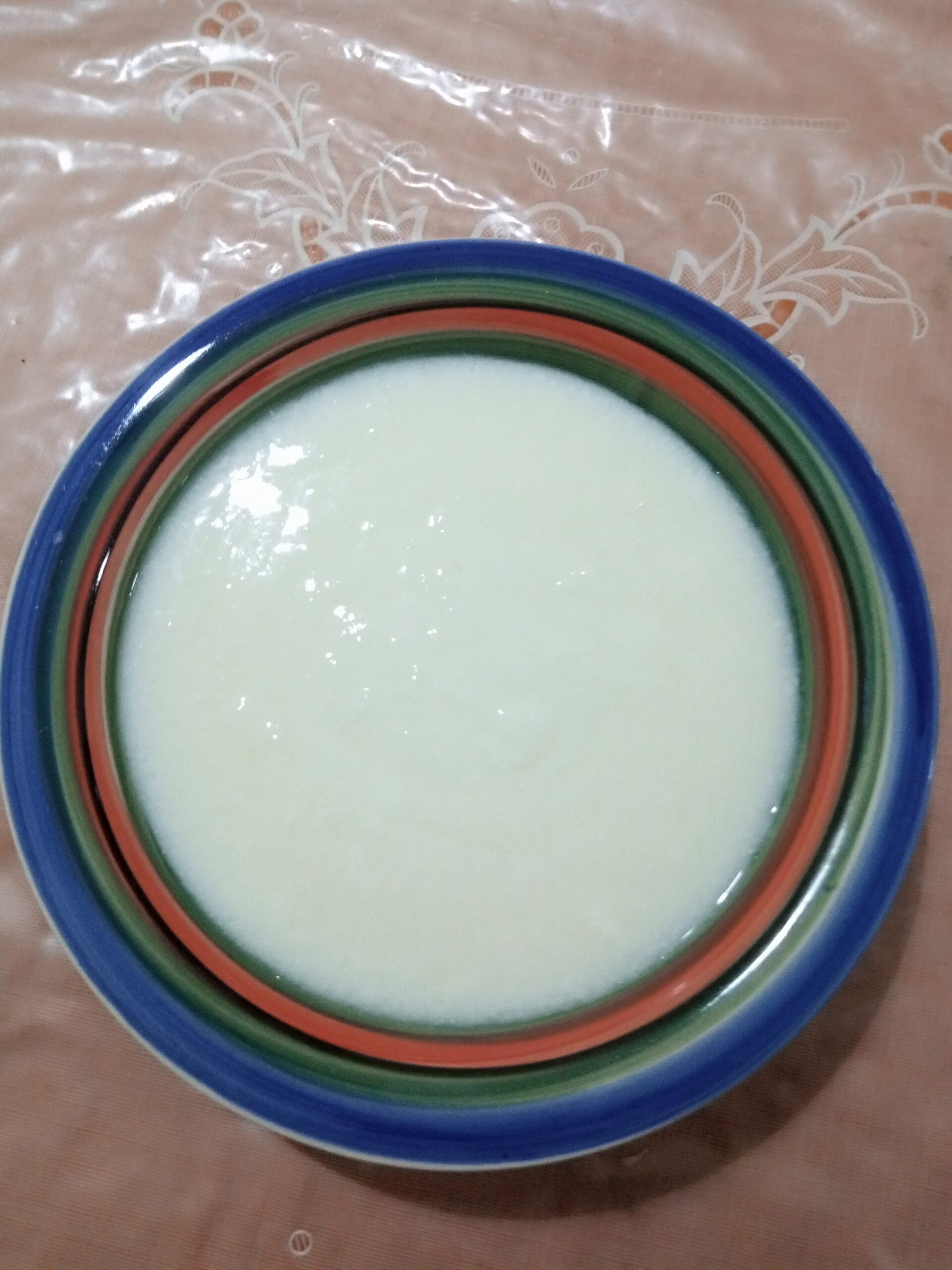



A nicely written informative article.No doubt curd/yogurt is an affordable nutritional food easily available everywhere and can be easily prepared at home as well.Thanks for sharing a valuable article.
Nasir
Thanks for your update,its always encouraging finding responsnse frome readers .